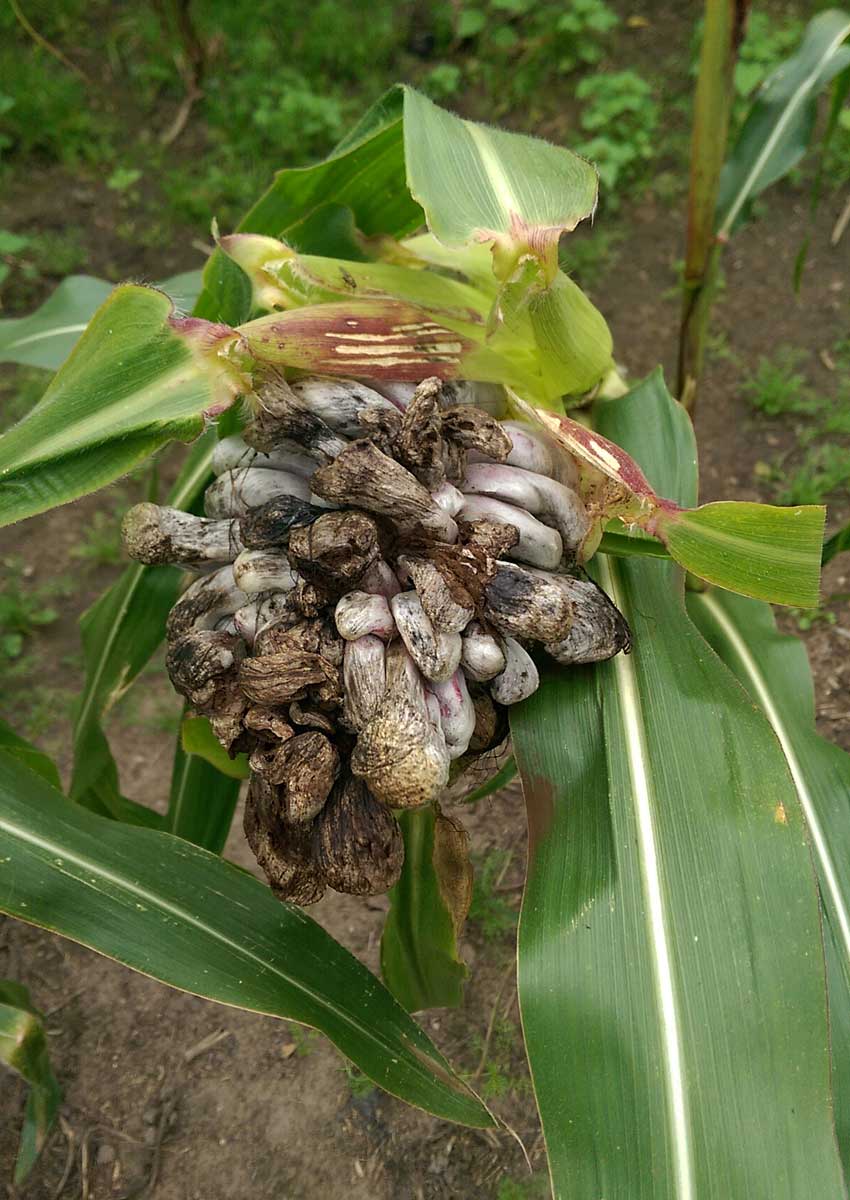Corn smut is caused by the fungi Ustilago maydis. The infection takes place on growing plant tissue. The spores penetrate the plant through the stomatous, injuries or cell walls directly into the plant. Here they stimulate the growth and swell up into tumor-like galls.
Spores themselves are able to survive for 10 years in the soil. Typically they will be spread through seed, wind and water splashes. In spring they start to grow, especially in stressed plants. Stress factors for plants are for example fast changing weather conditions (high temperature, dryness, late frost, hail) or attacks of Oscinella frit. The maize then tries to balance this growth deficit. Therefore corn smut is often found in years with great weather fluctuations. Also wide row distance and sensitive species prefer the growth of this plant disease.
Depending on the intensity of corn smut on plants there are differences in nutrient value. DM – content and NFE decreases, and due to the degradation of carbohydrates, the protein content increases (relative value). In total the nutrient value is lower and the risk of other fungi caused infections increase, which also means higher mycotoxin risk. Additionally palatability and feed intake also decreases. An infection of less than 20 % has normally no effect on nutrient concentration (LfL, 2006).
The changed nutrient composition has no effect on fermentation quality of the silages, but a decreased aerobic stability is possible. Therefore the application of the silage additive BioCool in the case of corn smut infection can be recommended.
